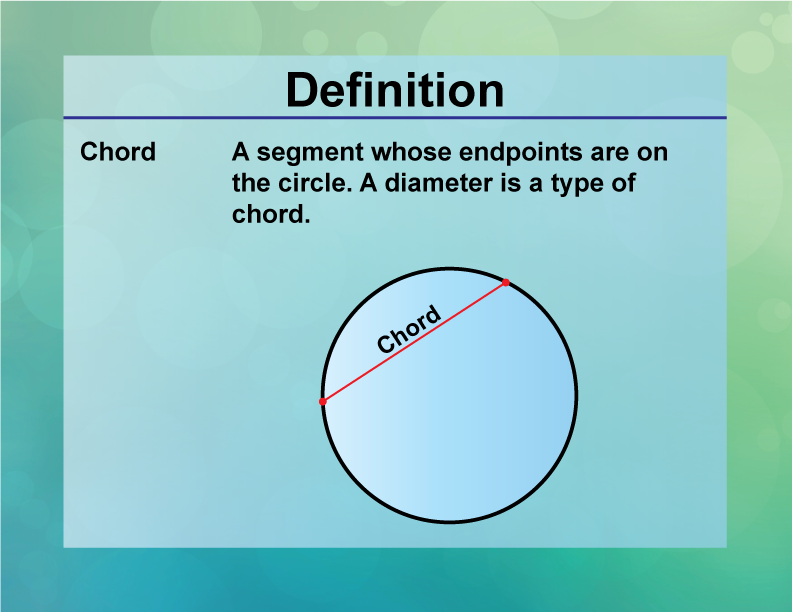
^ Flajolet, Philippe Noy, Marc (2000), "Analytic combinatorics of chord diagrams" (PDF), in Krob, Daniel Mikhalev, Alexander A.In algebraic geometry, chord diagrams can be used to represent the singularities of algebraic plane curves. In the Gauss diagram of a knot, every chord crosses an even number of other chords, or equivalently each pair in the diagram connects a point in an even position of the cyclic order with a point in an odd position, and sometimes this is used as a defining condition of Gauss diagrams. With this extra information, the chord diagram of a knot is called a Gauss diagram. To fully describe the knot, the diagram should be annotated with an extra bit of information for each pair, indicating which point crosses over and which crosses under at that crossing. In knot theory, a chord diagram can be used to describe the sequence of crossings along the planar projection of a knot, with each point at which a crossing occurs paired with the point that crosses it. The crossing pattern of chords in a chord diagram may be described by a circle graph, the intersection graph of the chords: it has a vertex for each chord and an edge for each two chords that cross. There is a Catalan number of chord diagrams on a given ordered set in which no two chords cross each other. The number of different chord diagrams that may be given for a set of 2 n. Chord diagrams are conventionally visualized by arranging the objects in their order around a circle, and drawing the pairs of the matching as chords of the circle.

In mathematics, a chord diagram consists of a cyclic order on a set of objects, together with a one-to-one pairing ( perfect matching) of those objects. Also below, if you see an open circle at the top of the chart, then this represents an open string, so you don’t put any fingers on this string.Cyclic order and one-to-one pairing of a set of objects The 15 possible chord diagrams on six cyclically-ordered points The solid circles you'll see in the images below represent where you position your fingers on the strings.Ĥ.

The four strings, from left to right, are G, C, E, and A, also shown above.ģ. You can see these labeled on a real ukulele in the image above.Ģ. A chord chart is designed to illustrate the first five frets of a ukulele, with the vertical lines being the strings and the horizontal lines being the frets. Here are the four things you need to know to read a chord chart:ġ.

TIP: Try to play on the fingertips as much as possible to avoid muting the other strings, to get a clear sound.īefore you get started learning the chords, you’ll need to understand how a ukulele chord chart works. By learning these basic chords you’ll be able to play many awesome songs on your ukulele in no time. If you’re new to ukulele and are wondering where to start, then you can begin with these easy chords! On this page we’ve chosen to break down the top 13 ukulele chords. Top 13 Ukulele Chords (A Beginner's Guide To Ukulele Chords)


 0 kommentar(er)
0 kommentar(er)
